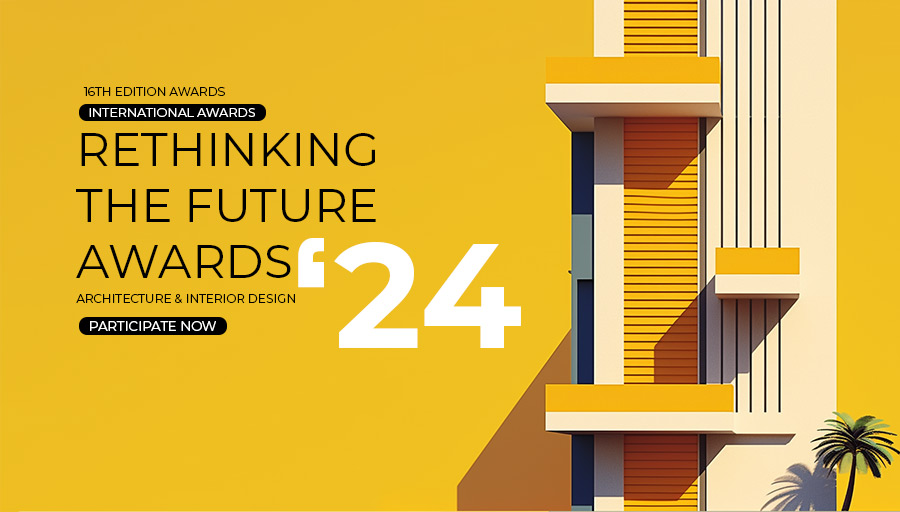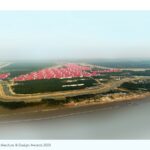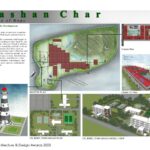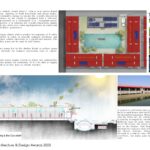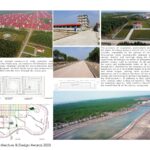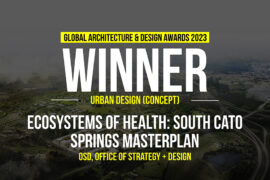“Bhashan Char—Beacon of Hope” is the largest purpose-built resettlement project in the world for 1 lakh Forcibly Displaced Myanmar Nationals in Bangladesh. We, as an onshore consultant, have taken the first bold and innovative initiative to develop a sustainable habitat on the char land, Bhasanchar, in a planned and comprehensively eco-friendly manner in the history of Bangladesh.
Global Design & Architecture Design Awards 2023
First Award | Sustainable Project of the Year (Built)
Project Name: Bhashan Char – Beacon of Hope
Category: Sustainable Project of the Year (Built)
Studio Name: MDM Architects
Design Team: All Design Done by MDM Architects
Area: 784 acre
Year: 2017-2019
Location: Hatia Upazila, Noakhali District, Chattogram Divition
Consultants: MDM Architects
Photography Credits: MDM Architects
Render Credits: MDM Architects
Other Credits: MDM Architects
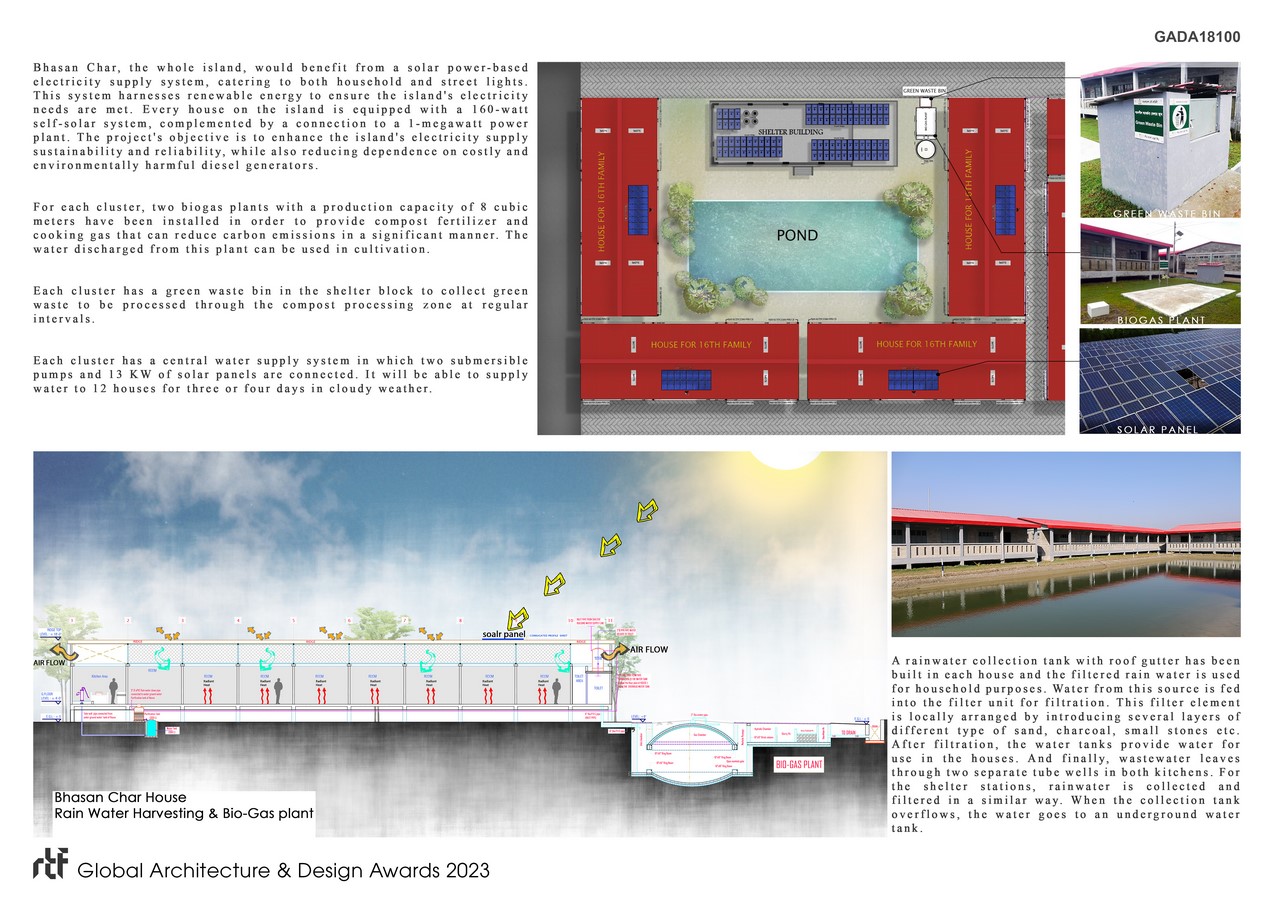
To ensure safety, security, and sustainability facilities for transitional staying and better living, we have used modular cluster planning as our prime design concept, considering the limitations of technical execution, time, and geographical location. This approach has involved the island in small, self-contained cluster housing, each with its own facilities and services.
The master plan has been split into 120 clusters with well-planned internal connectivity and an integrated drainage and sewerage system. The flood and shore protective 12.1 km long and 5.8 m high embankment with integrated drainage, the organized internal connectivity with vehicular and disabled access, water demand mitigation through rainwater harvesting and ponds, and solar-powered submersible pumps for 1440 cluster houses, a solar power-based electricity supply system for household and street lights, a compost processing zone, dedicated green waste bins and biogas plants, plantations and a retention pond are some of the environment-friendly features of the design that have been built to ensure sustainable development for the community.
The project has used an innovative and comprehensive approach that enables the design to provide future residents with both temporary and long-term services. The accessibility and availability issues of various public goods and services in island settings were another key concern for us. For the convenience of islanders, numerous hospitals, community clinics, schools, institutions for vocational training, mosques, and bazaars (marketplaces) have been constructed.
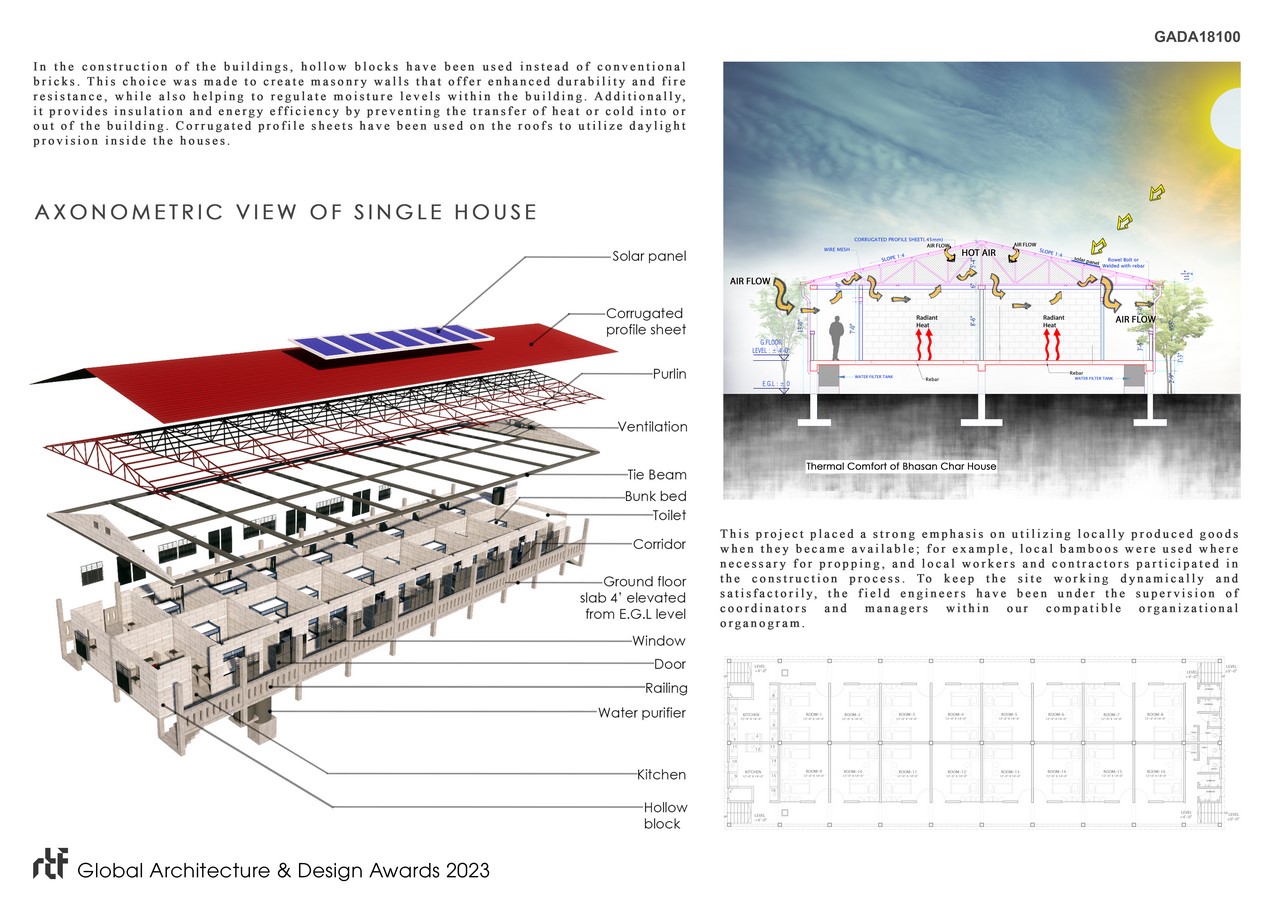
To ensure protection and security, watch towers and fire service stations, as well as CCTV and lots of street lighting were built. To promote social cohesion and understanding between the Rohingya and the local population, the project has introduced the provision of training facilities for the skill development of the Rohingya people.
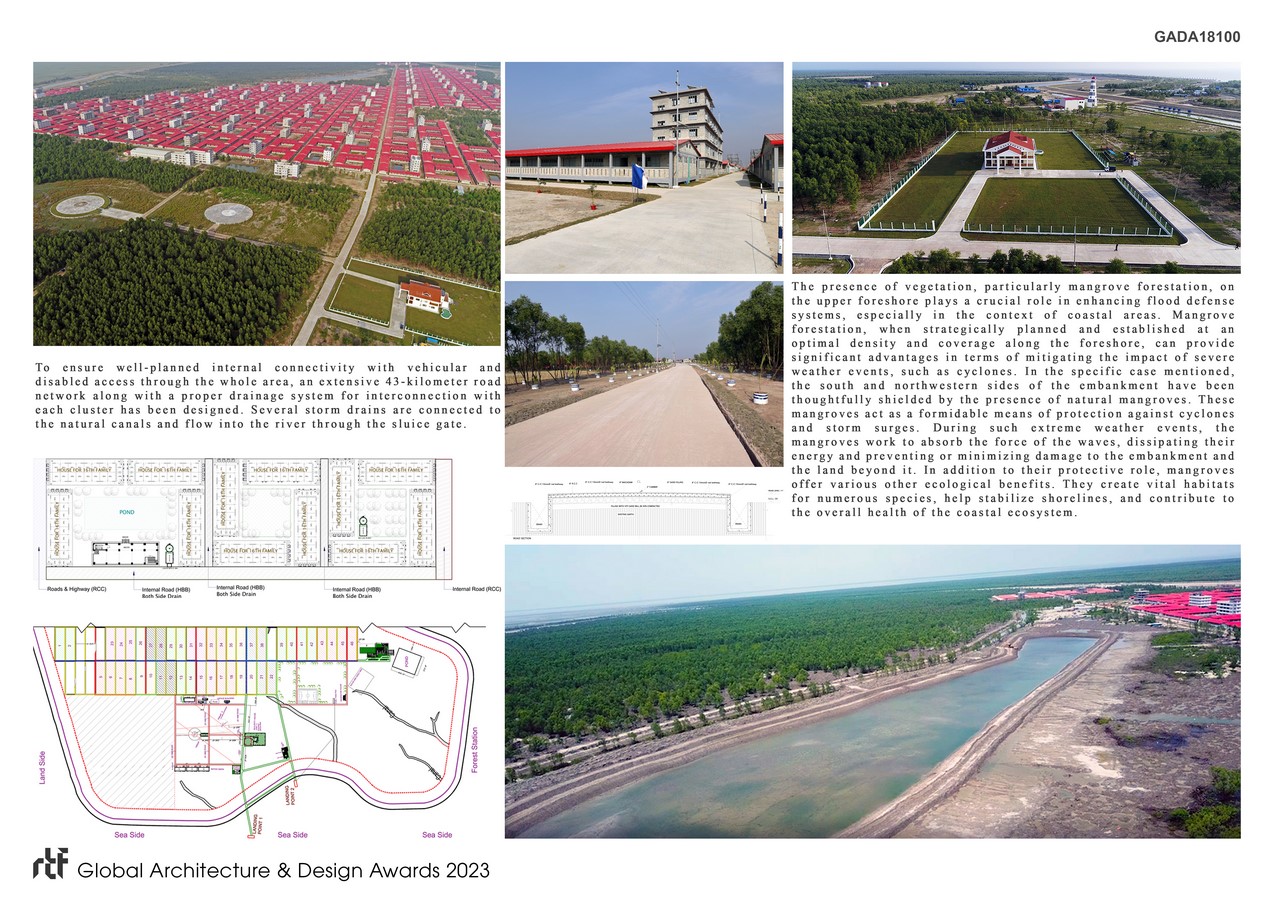
The outstanding development of the Char Island by utilizing dynamic, sustainable, and eco-friendly technologies has created a unique pathway and template for the government’s future development. Now, the project has become a true beacon of hope and has great value to the end users as customers for having the great opportunity of something of their own. Thus, this project has opened up new possibilities to be used as a model for building townships in parallel locations.

